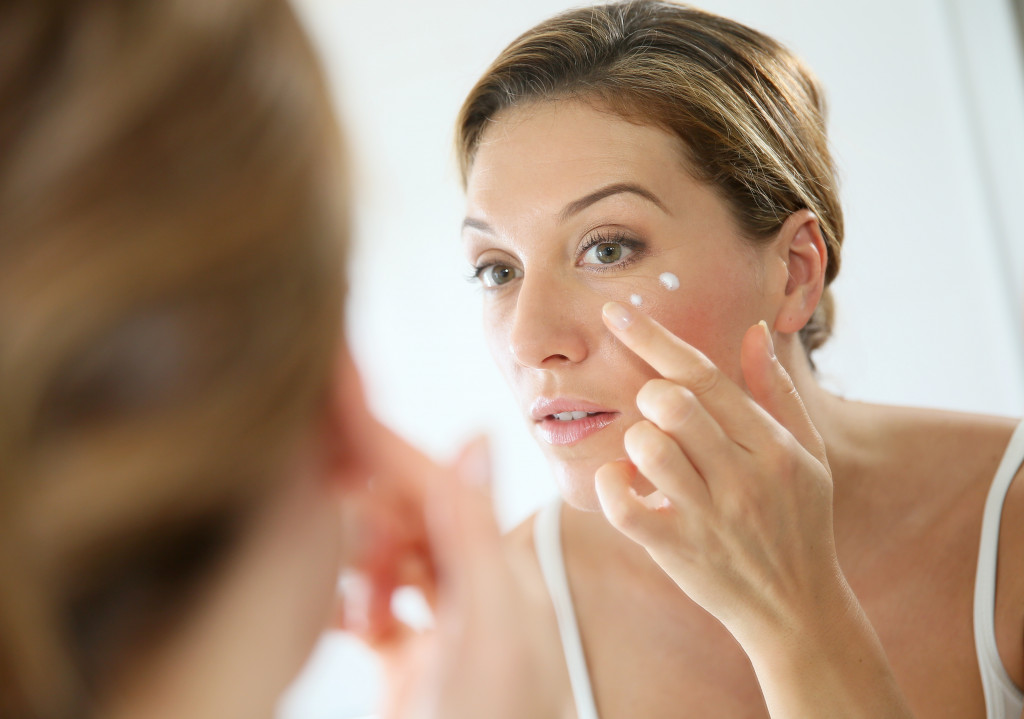Disclaimer: This website provides health information for educational purposes only and is not a substitute for professional medical advice, diagnosis, or treatment. Always seek the guidance of a qualified healthcare provider with any questions you may have.
Sunscreen is an absolute necessity if you want to protect your skin from the sun’s harmful rays. But did you know that there’s more to using sunscreen than simply slathering it on? To get the most out of your sunscreen, you need to know the different types of sunspots and how to treat them.
Two Kinds of Sunspots
There are two main types of sunspots: brown spots and white spots. Brown spots are typically caused by over-exposure to the sun because they contain more melanin, the pigment that gives skin its color. They tend to be larger and darker than white spots and can sometimes be raised or itchy.
On the other hand, white sunspots or idiopathic guttate hypomelanosis (IGH) are often small and round and can be lighter or darker than your surrounding skin. The causes of IGH are less clear, but it’s believed to be linked to genetics and certain medications.
Both sunspots aren’t harmful and naturally occur as people age, but some prefer to get rid of them because they can be unsightly. So, if you’re looking to get rid of them, there are a few options like prevention, home remedies, and cosmetic treatments.
How to Prevent Sunspots
The best way to treat sunspots is to prevent them from forming in the first place. Here are some ways to do that:
1. Wear Sunscreen
Even if it’s cloudy, it’s vital to apply sunscreen with an SPF of 30 or higher and apply it generously to all exposed skin. You should also reapply sunscreen every two hours or more if you’re sweating or swimming. This is because sunscreen can rub off, losing its effectiveness over time.
Remember that sunscreen should be a staple in your skincare routine year-round. You might not think you need to wear sunscreen in the winter, but the sun’s rays can be just as harmful as in the summer. So, even when it’s cold outside, make sure you’re applying sunscreen to exposed skin.
2. Seek Shade
Try to stay in the shade as much as possible when the sun is strongest, which is usually between 10 am and 4 pm. This will help protect your skin from the sun’s harmful rays. Of course, if this isn’t possible, make sure you’re wearing sunscreen. But if you can avoid going out in the sun during these peak hours, that’s even better.
3. Cover Up
Wearing clothing that covers your skin can also help prevent sunspots. Look for clothing with an SPF rating, and choose items that cover your arms and legs. Wearing a wide-brimmed hat will also help keep the sun off your face to avoid sunspots on your forehead, nose, and cheeks.
4. Use Sunglasses
Make sure you’re wearing sunglasses when you’re out in the sun. Not only will this help protect your eyes from the sun’s harmful rays, but it will also help prevent sunspots around your eyes. So, don’t forget to pack your sunglasses when you head out for a day in the sun.
How to Treat Sunspots
If you already have sunspots, you can do a few things to help fade or treat them. Here are five options:
1. Try a Topical Treatment
You can find many topical treatments that can help improve the appearance of sunspots online or in your local drugstore. But make sure to look for skincare products that contain hydroquinone, retinoids, or hydrocortisone because these ingredients can help lighten and improve the appearance of sunspots.
2. Consider Home Remedies
You can try home remedies to help lighten sunspots. For instance, you can use a lemon juice and water mixture or apple cider vinegar to the affected area. It’s important to note that home remedies may not work for everyone, and they can sometimes cause irritation. So, if you have sensitive skin, it’s best to consult with a dermatologist before trying any home remedies.
3. Try Laser Treatment
Laser treatment can also help to fade sunspots. During the treatment, a laser pigmentation machine destroys the melanocytes that cause hyperpigmentation. This can help to improve the appearance of sunspots and other forms of hyperpigmentation, such as age spots.
4. Consider Microdermabrasion
Microdermabrasion is a type of exfoliation that can help to improve the appearance of sunspots. During the treatment, a special device is used to sand down the top layer of skin. This can help enhance sunspots’ appearance and other forms of hyperpigmentation.
5. See a Dermatologist
If you’re concerned about sunspots or if home remedies and over-the-counter treatments haven’t worked, make an appointment to see a dermatologist. They can assess your sunspots and recommend the right treatment for you.
Sunspots may be a cosmetic concern, but they can also be a sign of skin damage. So, it’s essential to take steps to prevent them. And if you do develop sunspots, don’t hesitate to seek treatment. With proper care, you can help fade sunspots and improve the overall appearance of your skin.





